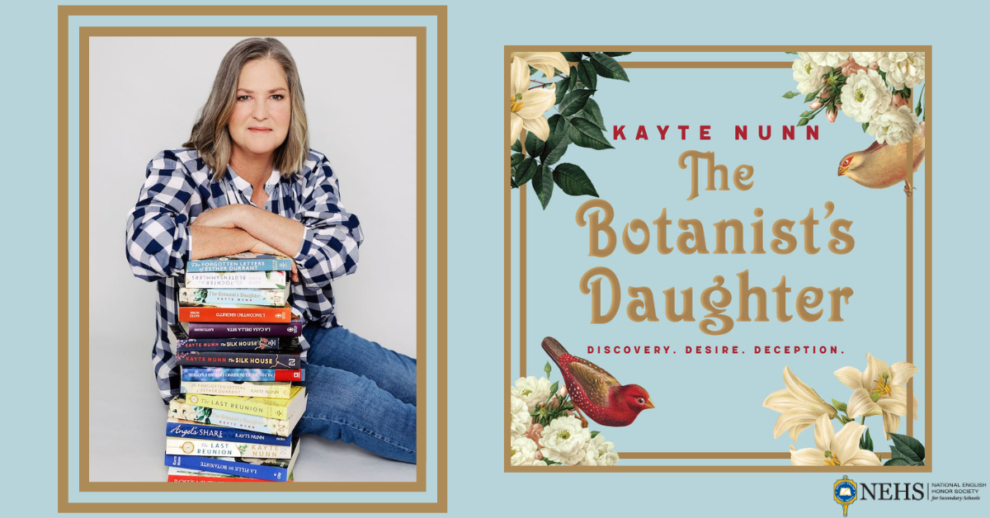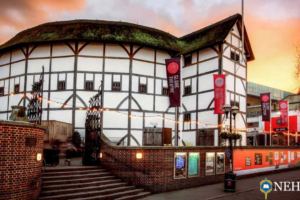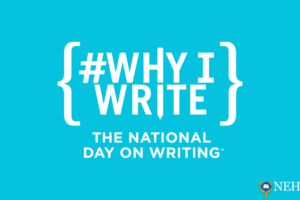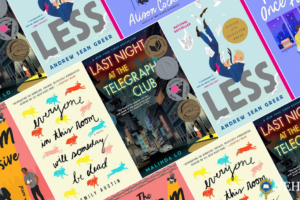Kayte Nunn, the author of the 2024 NEHS Common Reader, The Botanist’s Daughter, grew up in England and the US, and has lived in Australia for more than twenty five years, where she has worked variously as a book, magazine, and web editor and writer. She has written four historical fiction novels and her latest release is a contemporary-historical crime mystery entitled The Only Child.
Nunn will be giving an exclusive webinar to NEHS students and Chapter Advisors on November 7, 2023, at 6 p.m. CST.
Nunn was a child who loved reading and, as she says, she went from reading books about ponies to devouring Aleksandr Solzhenitsyn and John Wyndham when she discovered the treasures held in her high school library. She worked in several jobs, always with increasing amounts of writing and then took the step to writing fiction full time. She is now the author of seven novels.
The Botanist’s Daughter came about when Nunn was visiting the Botanic Gardens of Sydney and had a flash of inspiration upon seeing a bronze sundial in the herb garden there. As she notes in an interview with Claire Eva, “It was like a bolt of lightning—I had a vision of a young woman in a walled garden in England, with a similar sundial at its center.” She knew, at that moment, that she had the genesis of what would become a best-selling story.
Nunn grew up in England and the United States before moving to Australia so it seems natural that The Botanist’s Daughter would be set in two of those places. She has not, though, visited Chile, where a large part of the text is written. Accurately describing nineteenth-century Valparaiso required several months of research “on Victorian everyday life” (The Book Muse) and “diary accounts of ocean travel in the 19th century, [and] the export industry of Chile” (Claire Eva) in her local library and at the State Library of New South Wales. Her new background knowledge allowed her to develop her moment of inspiration at the Botanic Gardens of Sydney into a plot that she laid out on a whiteboard, and which contained the “emotional structure of the narrative” (The Book Muse). However, she always leaves a little room for “the detours [her] subconscious might take [her] on” (The Book Muse).
The protagonists of The Botanist’s Daughter, Anna and Elizabeth, come from different geographic backgrounds and historical contexts. However, they both reflect Nunn’s interest in plants and the fact that she comes from a “line of plantswomen—my grandmother and mother were passionate gardeners” (Claire Eva). While the novel is not based on any particular historical events, Nunn’s passion for botany did play into its development: “When [she] discovered a newspaper article online about a rare, poisonous plant that is native to Chile . . . [she] knew that would be the plant that Elizabeth [would go] in search of” (Claire Eva).
Anna and Elizabeth are very different characters, each with “a slightly different voice . . . to help give the flavor of the time” (The Book Muse). However, both are courageous and strong female protagonists who have to “summon inner strength, albeit in different ways” (The Book Muse) in a novel that is, at is core, about the power of hope.
Read more about the 2024 NEHS Common Reader and register now for Nunn’s webinar for NEHS students and Chapter Advisors.
National English Honor Society
The National English Honor Society (NEHS), founded and sponsored by Sigma Tau Delta, is the only international organization exclusively for secondary students and faculty who, in the field of English, merit special note for past and current accomplishments. Individual secondary schools are invited to petition for a local chapter, through which individuals may be inducted into Society membership. Immediate benefits of affiliation include academic recognition, scholarship and award eligibility, and opportunities for networking with others who share enthusiasm for, and accomplishment in, the language arts.
America’s first honor society was founded in 1776, but high school students didn’t have access to such organizations for another 150 years. Since then, high school honor societies have been developed in leadership, drama, journalism, French, Spanish, mathematics, the sciences, and in various other fields, but not in English. In 2005, National English Honor Society launched and has been growing steadily since, becoming one of the largest academic societies for secondary schools.
As Joyce Carol Oates writes, “This is the time for which we have been waiting.” Or perhaps it was Shakespeare: “Now is the winter of our discontent made glorious summer . . .” we celebrate English studies through NEHS.
National English Honor Society accepts submissions to our blog, NEHS Museletter, from all membership categories (students, Advisors, and alumni). If you are interested in submitting a blog, please read the Suggested Guidelines on our website. Email any questions and all submissions to: submit@nehsmuseletter.us.






